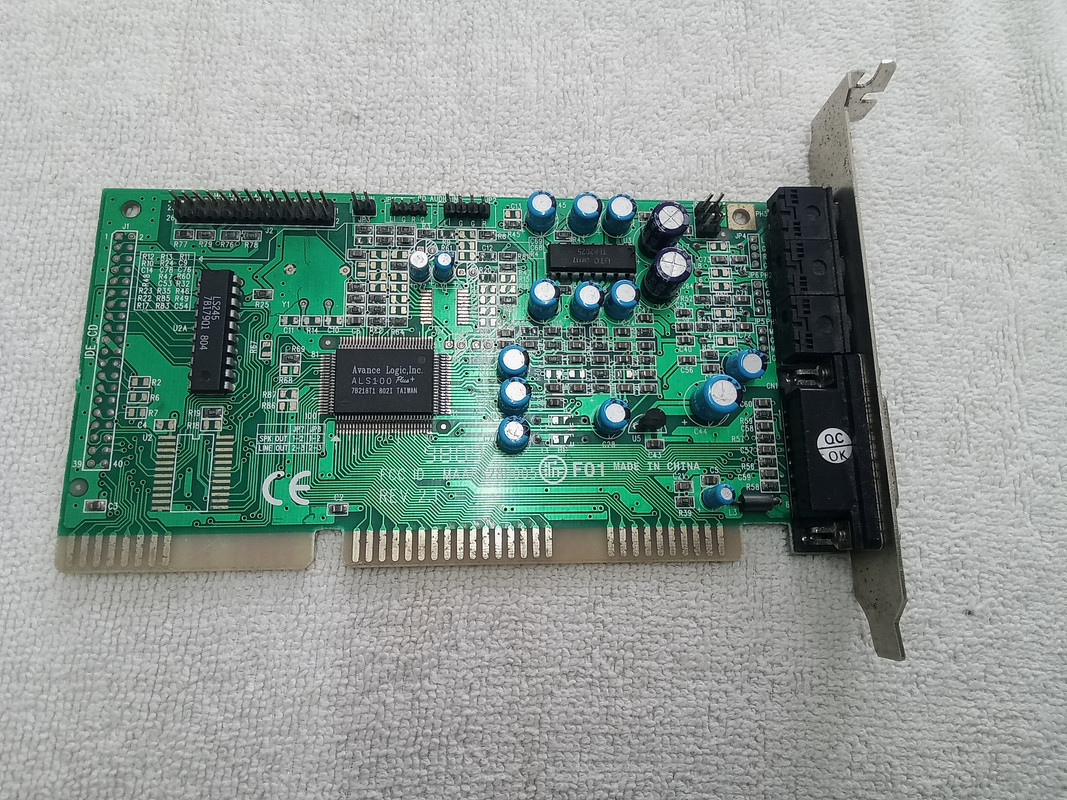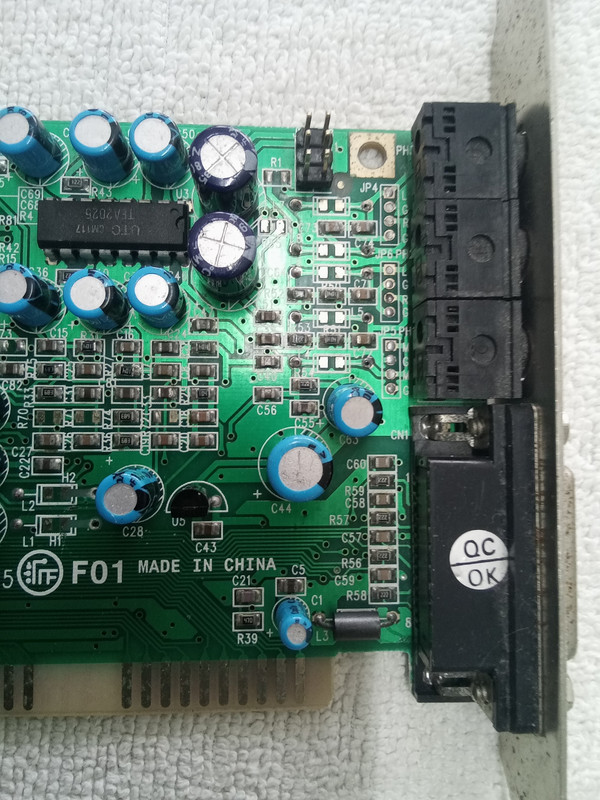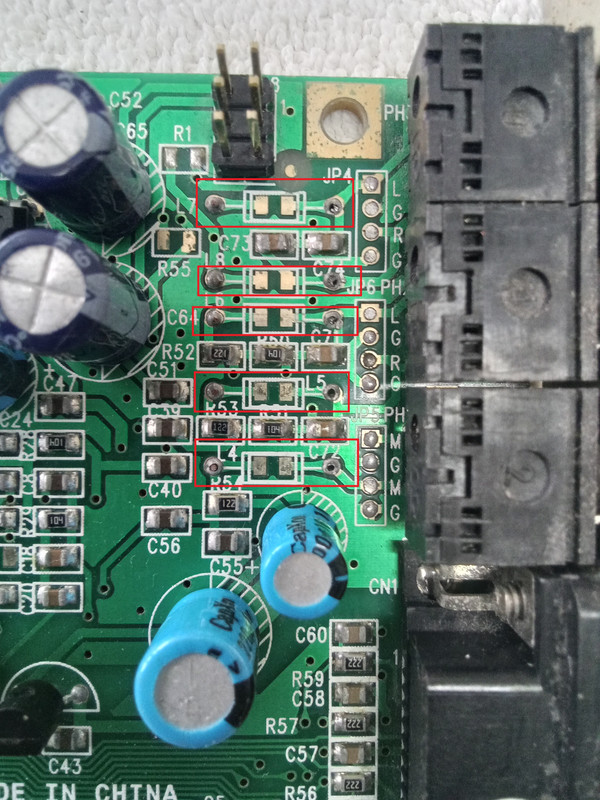nunoalex
Newbie level 4
Hi everyone
First post here
I love vintage computers and sometimes I come across salvaged parts and I try to repair.
I got a nice sound card but someone tore the ferrite beads for scrap... unreal
Is there a way to know what values this beads have so I van buy replacements ?


Only L3 has survived but I have no idea if it is of the same value as the others and even if it was I dont know how to measure it
I dont know if they are to filter the power rail noise +5v and +12v or if they are on the audio path (or both)
But since they zre so many and the card really only takes 2 voltages I am more inclined for audio (analog) noise suppression
Can someone help me find the right replacement ferrites ?
Thank you
Nuno Alex
First post here
I love vintage computers and sometimes I come across salvaged parts and I try to repair.
I got a nice sound card but someone tore the ferrite beads for scrap... unreal
Is there a way to know what values this beads have so I van buy replacements ?


Only L3 has survived but I have no idea if it is of the same value as the others and even if it was I dont know how to measure it
I dont know if they are to filter the power rail noise +5v and +12v or if they are on the audio path (or both)
But since they zre so many and the card really only takes 2 voltages I am more inclined for audio (analog) noise suppression
Can someone help me find the right replacement ferrites ?
Thank you
Nuno Alex

